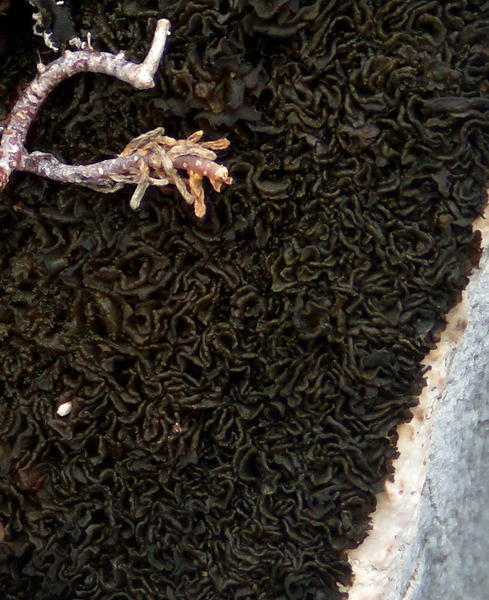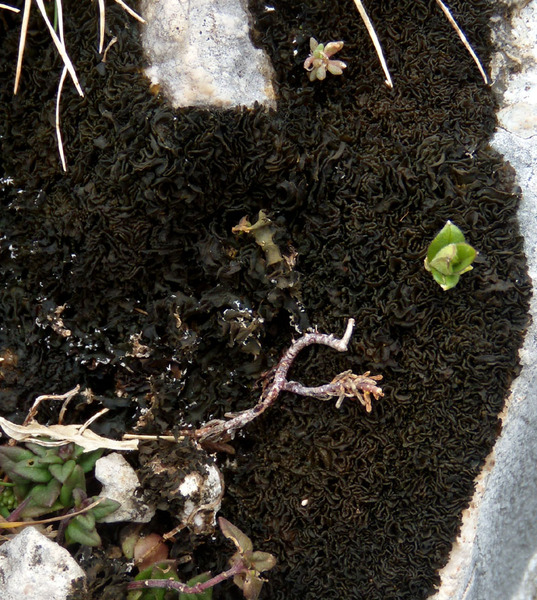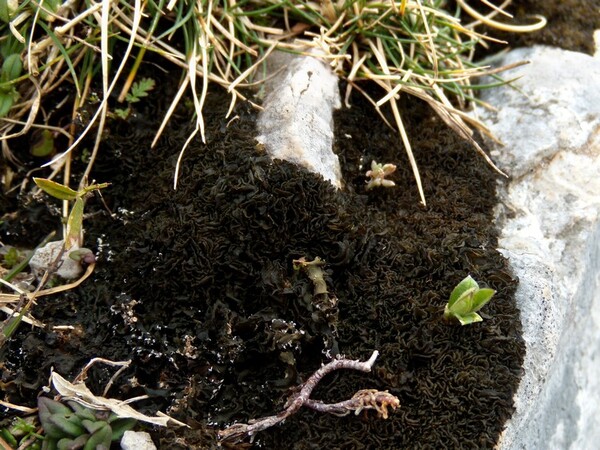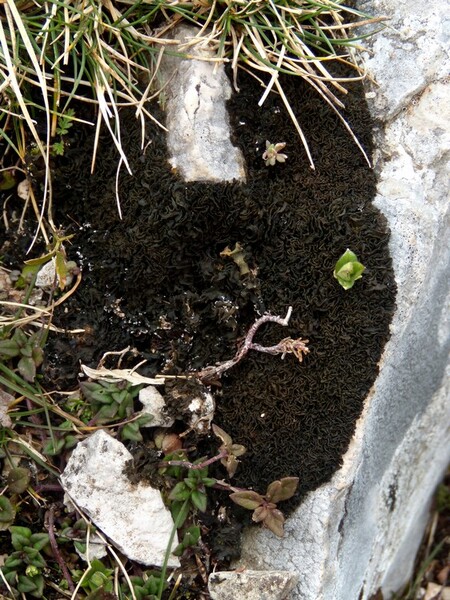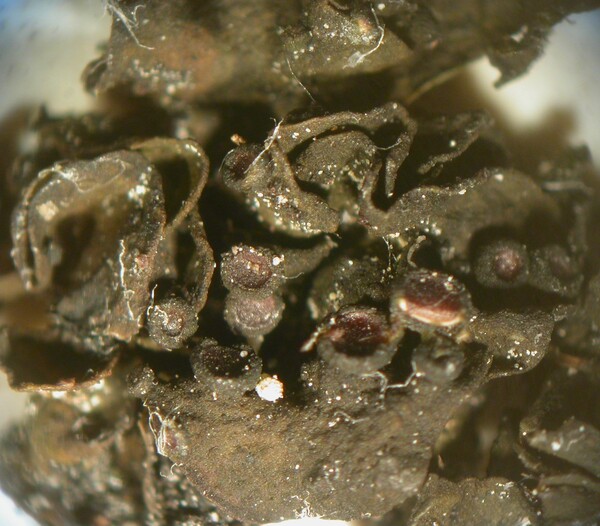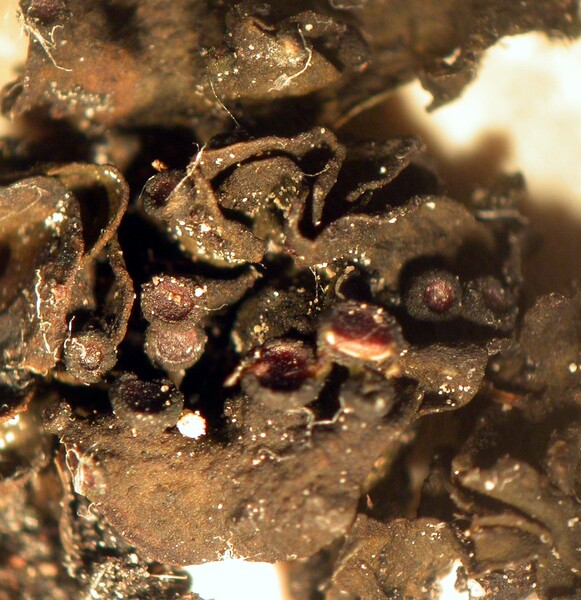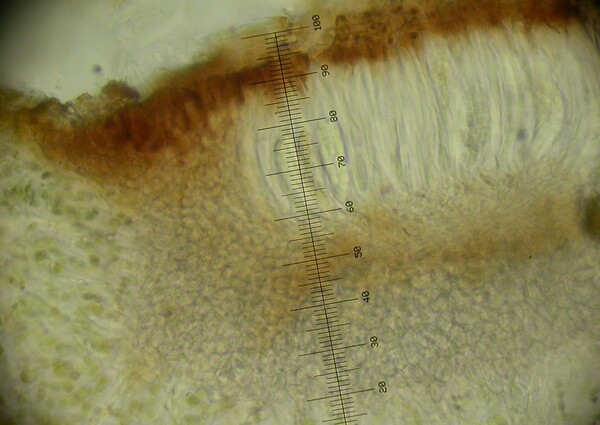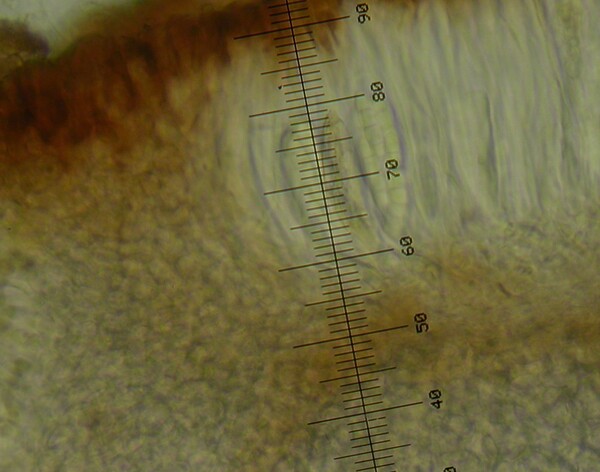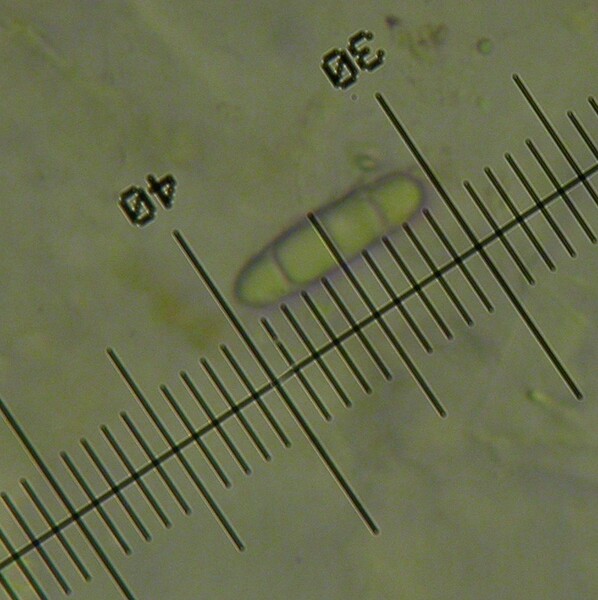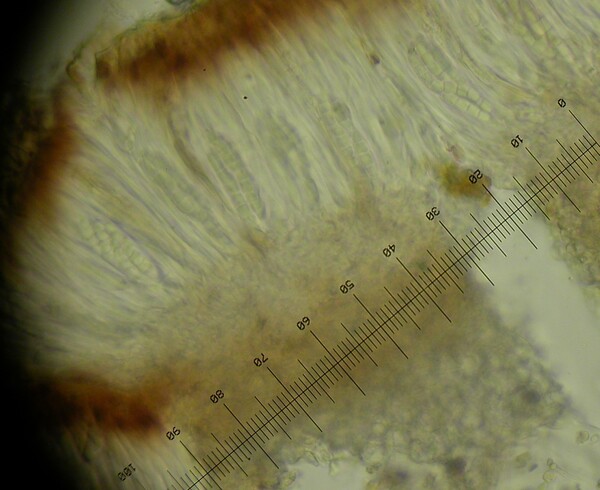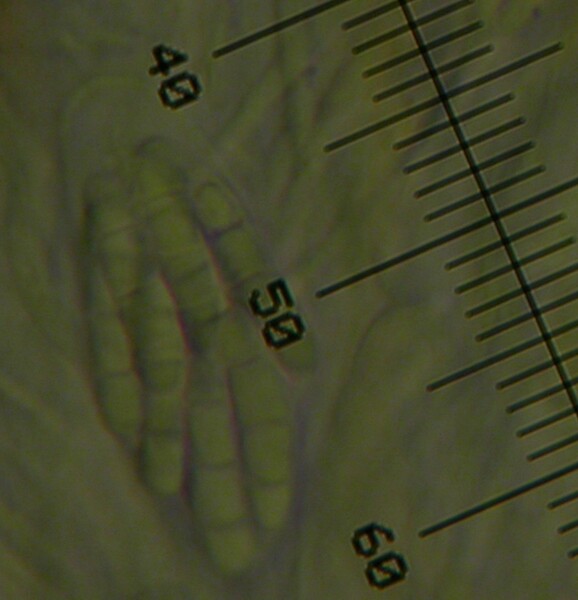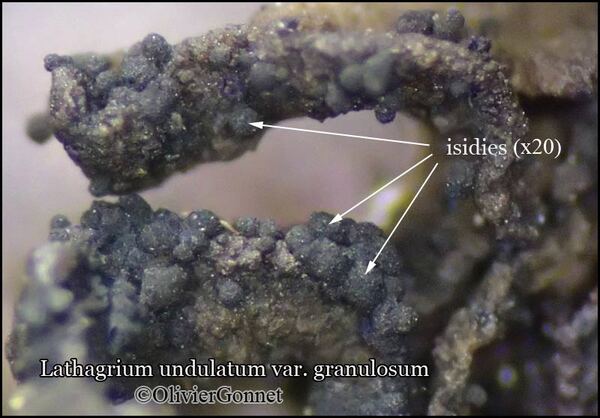Lathagrium undulatum (Flot.) Poetsch
in Poetsch & Schiedermayer, System. Aufzähl. samenlos. Pflanzen (Krypt.): 189, 1872. Basionym: Collema undulatum Laurer ex Flot. - Linnaea, 23: 161, 1850.
Synonyms: Collema aggregatum var. laureri (Flot.) Boistel; Collema laureri Flot.; Collema undulatum var. granulosum Degel.; Lathagrium laureri (Flot.) Arnold; Lathagrium laureri var. microphyllinum Bagl. & Carestia
Distribution: N - Frl, Ven (Nascimbene & Caniglia 1997, 2003c, Caniglia & al. 1999, Nascimbene 2005c, 2008c, Nascimbene & Marini 2007), TAA (Nascimbene 2003, 2008b, Nascimbene & al. 2005, 2006, 2022, Spitale & Nascimbene 2012), Lomb (Dalle Vedove & al. 2004), Piem (Isocrono & al. 2004, Matteucci & al. 2013), VA (Valcuvia 2000), Emil (Nimis & al. 1996, Tretiach & al. 2008, Fariselli & al. 2020), Lig (Giordani & Brunialti 2000, Giordani & al. 2016). C - Laz, Umb (Nimis & Tretiach 1999, Ravera & al. 2006), Abr (Nimis & Tretiach 1999, Caporale & al. 2016, Di Nuzzo & al. 2021, Gheza & al. 2021, Vallese & al. 2022), Mol (Nimis & Tretiach 1999, Caporale & al. 2008). S - Camp (Aprile & al. 2003, 2003b, Nimis & Tretiach 2004, Garofalo & al. 2010), Pugl, Bas (Nimis & Tretiach 1999, Potenza 2006, Potenza & al. 2010), Cal (Puntillo 1996), Si (Grillo & Caniglia 2004, Grillo & al. 2007b).
Description: Thallus foliose, homoiomerous, gelatinous and 140-300 µm thick when wet, olive-black to black, forming irregular, deeply lobed, 3-6 cm (rarely more) wide rosettes. Lobes (2-)3-4(-5) mm broad, concave, smooth, ascending, with a coarsely undulate, not swollen margin, sometimes with mainly marginal, granulose, 0.1-0.2 mm wide isidia-like outgrowths; lower surface paler, with scattered to confluent tufts of white hapters. Upper and lower cortices absent. Apothecia common (rarer in pseudoisidiate specimens), lecanorine, sessile, (0.7-)1-1.5 mm across, with a flat to convex, red-brown to rarely black-brown disc and a thin, entire to crenulate thalline margin. Thalline exciple ecorticate or pseudocorticate in basal parts; proper exciple euparaplectenchymatous, up to 130 µm wide laterally; epithecium brownish; hymenium colourless, 85-105 µm high, I+ blue; paraphyses simple or sparingly branched in upper part, 2-3(-4) µm thick at mid-level, the apical cells clavate, 4.5-6.5 µm wide; hypothecium pale yellow to yellowish brown, I+ blue. Asci 8-spored, cylindrical-clavate, the apex strongly thickened, the apical dome K/I+ pale blue, with a downwardly projecting K/I+ deep blue tubular structure. Ascospores 3-septate, not or only slightly constricted at septa, hyaline, linear-oblong with rounded ends, 17-30 x 6.5-9 µm. Pycnidia common, mostly marginal, paler than thallus. Conidia bacilliform, slightly swollen at both ends, 4-5 x 1.1.5 µm. Photobiont cyanobacterial (Nostoc, the cells in long chains). Spot tests: all negative. Chemistry: without lichen substances. Note: a temperate to arctic-alpine, probably circumpolar lichen found on calciferous rocks with some water seepage after rain, most frequent in upland areas. The record from Venezia Giulia cited by Nimis (1993: 264), being from outside Italy, is not accepted here.
Growth form: Foliose, broad lobed
Substrata: rocks
Photobiont: cyanobacteria, filamentous (e.g. Nostoc, Scytonema)
Reproductive strategy: mainly sexual
On otherwise dry surfaces with short periods of water seepage after rain
Commonnes-rarity: (info)
Alpine belt: extremely rare
Subalpine belt: very rare
Oromediterranean belt: very rare
Montane belt: rather rare
Submediterranean belt: very rare
Padanian area: absent
Humid submediterranean belt: very rare
Humid mediterranean belt: extremely rare
Dry mediterranean belt: absent

Predictive model
Herbarium samples
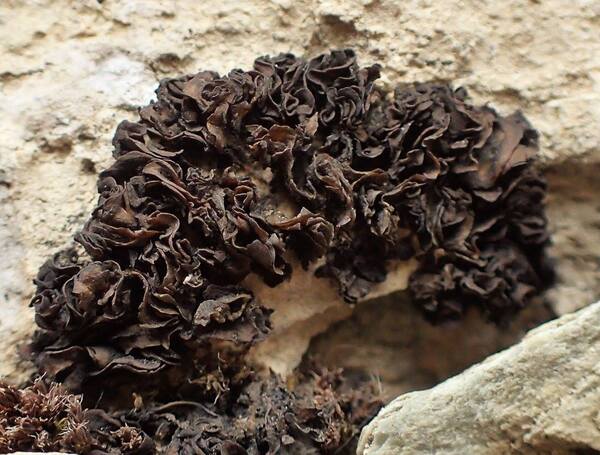

Curtis Randall Björk, - CC BY-SA 4.0
Sugarbowl-Grizzly Den Provincial Park, British Columbia, Canada
August 2017
as v. tilesii


P.L. Nimis; Owner: Department of Life Sciences, University of Trieste
Herbarium: TSB (31661)
2001/12/09
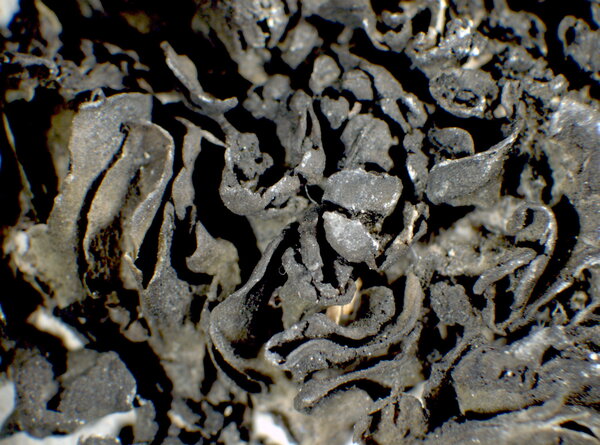

P.L. Nimis; Owner: Department of Life Sciences, University of Trieste
Herbarium: TSB (34782)
2001/02/02
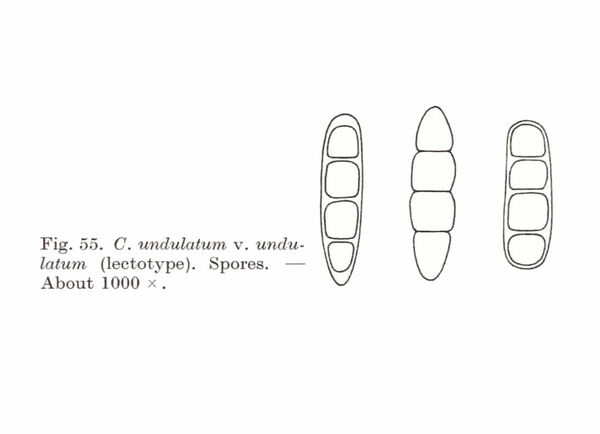
Degelius G. 1954. The lichen genus Collema in Europe: Morphology, Taxonomy, Ecology. Symbolae Bot. Upsal. 13, 2: 1-499.

Zahlbruckner A. 1926. Lichenes (Flechten). In: Engler A. (ed.): Die natürlichen Pflanzenfamilien. 2nd ed., vol 8, W. Engelmann, Leipzig, 270 pp.
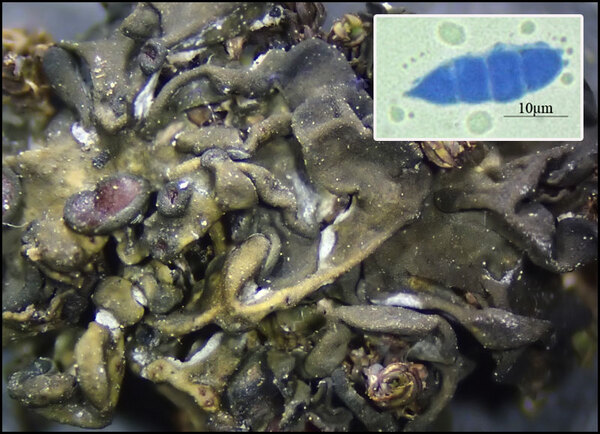
Courtesy Danièle et Olivier Gonnet - Source: https://www.afl-lichenologie.fr/Photos_AFL/Photos_AFL_L/Texte_L_2/Lathagrium_undulatum.htm
France, session AFL 2015 - Lot
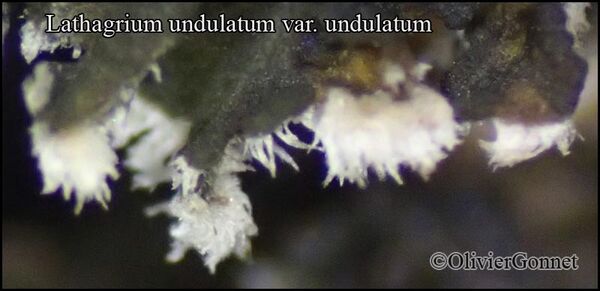
Courtesy Danièle et Olivier Gonnet - Source: https://www.afl-lichenologie.fr/Photos_AFL/Photos_AFL_L/Texte_L_2/Lathagrium_undulatum.htm
France, session AFL 2015 - Lot
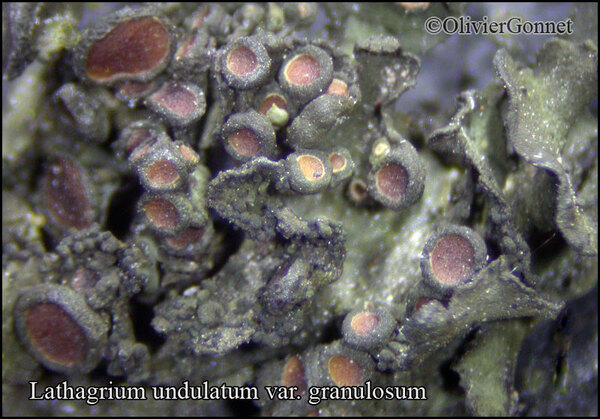
Courtesy Danièle et Olivier Gonnet - Source: https://www.afl-lichenologie.fr/Photos_AFL/Photos_AFL_L/Texte_L_2/Lathagrium_undulatum.htm
France, session AFL 2015 - Lot
var.granulosum
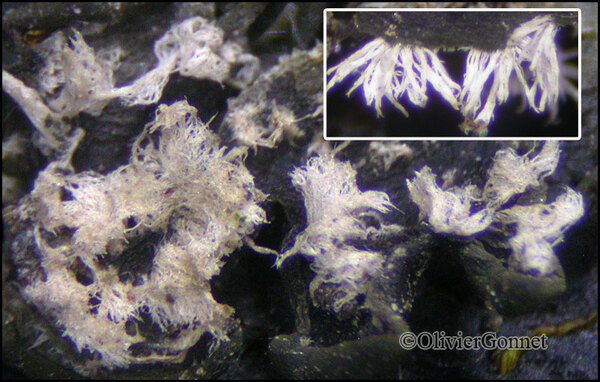
Courtesy Danièle et Olivier Gonnet - Source: https://www.afl-lichenologie.fr/Photos_AFL/Photos_AFL_L/Texte_L_2/Lathagrium_undulatum.htm
France, session AFL 2015 - Lot
var.granulosum
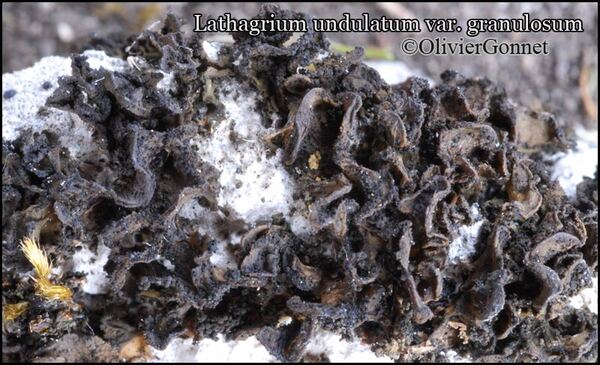
Courtesy Danièle et Olivier Gonnet - Source: https://www.afl-lichenologie.fr/Photos_AFL/Photos_AFL_L/Texte_L_2/Lathagrium_undulatum.htm
France, session AFL 2015 - Lot
var.granulosum
Growth form: Foliose, broad lobed
Substrata: rocks
Photobiont: cyanobacteria, filamentous (e.g. Nostoc, Scytonema)
Reproductive strategy: mainly sexual
On otherwise dry surfaces with short periods of water seepage after rain
Commonnes-rarity: (info)
Alpine belt: extremely rare
Subalpine belt: very rare
Oromediterranean belt: very rare
Montane belt: rather rare
Submediterranean belt: very rare
Padanian area: absent
Humid submediterranean belt: very rare
Humid mediterranean belt: extremely rare
Dry mediterranean belt: absent

Predictive model
| Herbarium samples |


Curtis Randall Björk, - CC BY-SA 4.0
Sugarbowl-Grizzly Den Provincial Park, British Columbia, Canada
August 2017
as v. tilesii


P.L. Nimis; Owner: Department of Life Sciences, University of Trieste
Herbarium: TSB (31661)
2001/12/09


P.L. Nimis; Owner: Department of Life Sciences, University of Trieste
Herbarium: TSB (34782)
2001/02/02

Degelius G. 1954. The lichen genus Collema in Europe: Morphology, Taxonomy, Ecology. Symbolae Bot. Upsal. 13, 2: 1-499.

Zahlbruckner A. 1926. Lichenes (Flechten). In: Engler A. (ed.): Die natürlichen Pflanzenfamilien. 2nd ed., vol 8, W. Engelmann, Leipzig, 270 pp.

Courtesy Danièle et Olivier Gonnet - Source: https://www.afl-lichenologie.fr/Photos_AFL/Photos_AFL_L/Texte_L_2/Lathagrium_undulatum.htm
France, session AFL 2015 - Lot

Courtesy Danièle et Olivier Gonnet - Source: https://www.afl-lichenologie.fr/Photos_AFL/Photos_AFL_L/Texte_L_2/Lathagrium_undulatum.htm
France, session AFL 2015 - Lot

Courtesy Danièle et Olivier Gonnet - Source: https://www.afl-lichenologie.fr/Photos_AFL/Photos_AFL_L/Texte_L_2/Lathagrium_undulatum.htm
France, session AFL 2015 - Lot
var.granulosum

Courtesy Danièle et Olivier Gonnet - Source: https://www.afl-lichenologie.fr/Photos_AFL/Photos_AFL_L/Texte_L_2/Lathagrium_undulatum.htm
France, session AFL 2015 - Lot
var.granulosum

 INDEX FUNGORUM
INDEX FUNGORUM
 GBIF
GBIF
 DOLICHENS
DOLICHENS
